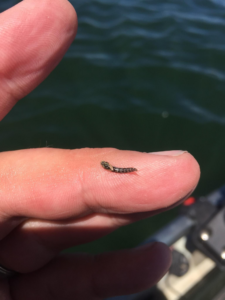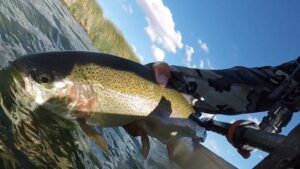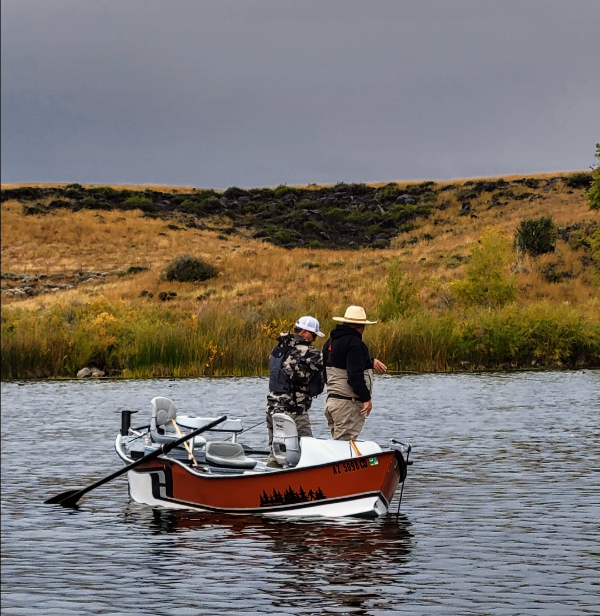I asked Coach Mac on the Fly to write a post on Stillwater fishing. It is no secret that he is passionate about lake fishing and loves guiding on them. You can find him on both Instagram and Facebook. To reach Coach Mac, you can email him at coach.mac.onthefly@gmail.com
The following is his post. Enjoy!
Stillwater fly fishing in the White Mountain lakes of Arizona is an often-overlooked gem. While the region is well known for its high-country streams and wild Apache trout, its lakes offer incredible fly fishing opportunities for those willing to adapt to Stillwater tactics. I’ve spent countless hours refining techniques that work on these waters, from deep drop-offs to shallow weed beds. Whether you’re targeting trophy brown trout in the depths or cruising rainbows in the shallows, the right approach makes all the difference.
Best Flies for White Mountain Stillwater Fishing
Fly selection in Stillwater is key, and it varies by season and time of day. Here are a few of my go-to patterns:
Chironomids –

Midge Pupa
Woolly Buggers and Leeches– Black, olive, and brown leeches fished with a slow retrieve are deadly, especially at sunrise and sunset.
Damsel and Dragonfly Nymphs – Best in late spring and early summer when these insects are hatching in the shallows.
Balanced Leeches – Excellent under an indicator, particularly in deeper sections of lakes where fish hold in cooler water.
Dry Flies – A solid choice during summer when the terrestrials and mayflies are present.
How to Fish Stillwater
Fishing Stillwater requires a different approach than moving water. Here are a few key techniques:
20 minute Rule
When indicator fishing, I like to follow a “20min rule”
If nothing is happening in that time frame – I switch something up
– My first change is usually going to be a depth change. Sometimes you might be off the fishes cruising depth by 2′.
– My second change tends to be a depth change but in the opposite direction.
-My third change will most likely be a fly pattern change.
-My fourth change is going to be a new location.
Indicator Nymphing
– Use an indicator with chironomids, balanced leeches, or pheasant tail variations.
– Vary depths to find the right zone where fish are feeding.
– Slow, subtle twitches can entice strikes.
Slow Retrieves
– Strip in leeches, damselfly nymphs, or woolly buggers with a slow, steady retrieve.
– Use an midge tip line to fish shallow or over weed beds and intermediate or sinking line to reach deeper fish.
– Short, erratic movements mimic natural prey.
Wind Drifts
– Cast out with a floating line and let the wind push your flies along drop-offs.
– Works well for suspended fish feeding on drifting insects.
Sight Fishing
– During certain times, fish will cruise the shallows looking for food.
– Look for shadows and subtle movement along weed beds and shoreline edges.
Best Times of Year for Stillwater Fly Fishing
Spring (March – May)
– Ice-out brings trout into the shallows to feed aggressively.
– Best time for indicator nymphing with chironomids.
– Water temperatures rise, increasing fish activity.
Summer (June – August)
– Fish move deeper during midday but can be found in shallower areas early and late.
– Damsel and dragonfly hatches create excellent opportunities for nymph and dry fly action.
– Warmer weather and Summer storms can bring out some great terrestrial fly pattern fishing
Fall (September – November)
– Trout feed heavily before winter, often near shore.
– Browns become aggressive pre-spawn—streamers and leeches work well.
– Cooler temps make mid-day fishing productive again.
Winter (December – February)
– Fishing slows, but some lakes remain open year-round.
– Use slow, deep nymphing techniques with balanced leeches and midges.
– Patience is key—fish move less but still eat when presented with the right fly.
Final Thoughts
Stillwater fly fishing in Arizona’s White Mountains offers incredible opportunities for those who take the time to learn the nuances. From early spring chironomid hatches to aggressive fall streamer action, these lakes hold some of the best trout fishing in the state. With the right flies, techniques, and seasonal knowledge, you’ll be well on your way to landing trophy fish on the fly.
Tight lines,
Coach Mac

Coach Mac releasing a Rainbow Trout
